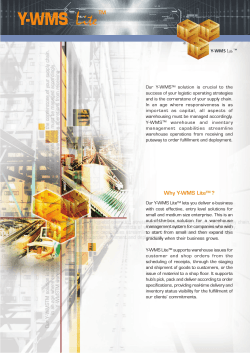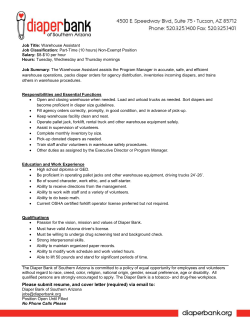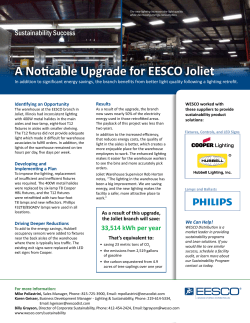
Data Warehouse Architecture By: Harrison Reid
Data Warehouse Architecture By: Harrison Reid Outline What is a Data Warehouse Architecture Five Main Data Warehouse Architectures Factors That Affect Choosing A Data Warehouse Architecture Summary Bibliography What is a Data Warehouse Architecture Primarily based on the business processes of a business enterprise Conceptualization of how the data warehouse is built Five Main Data Warehouse Architectures Independent Data Marts Data Mart Bus Architecture Hub-and-Spoke Centralized Data Warehouse Federated Architecture Independent Data Marts Data marts that are independent of each other Often created by organization units Inconsistent data definitions and different dimensions and measures Independent Data Marts Diagram Source systems Staging area Independent data marts (atomic/summariz ed data) End-user access and applications Data Mart Bus Architecture Creation starts with a business requirements analysis for a specific process such as orders, deliveries, customer calls, or billing. One mart is created for a single business process Additional marts are developed using the conformed dimensions of the first mart Data Mart Bus Architecture Diagram Source systems Staging area Dimensionalized data marts linked by conformed dimensions (atomic/summariz ed data) End-user access and applications Hub-and-Spoke Developed after an enterprise-level analysis of data requirements Focused on building a scalable and maintainable infrastructure Developed in an iterative manner Dependent data marts obtain the data from the warehouse Consist of a centralized hub that accepts requests from multiple applications that are connected through spokes Hub-and-Spoke Diagram Source systems Staging area Normalized relational warehouse (atomic data) End-user access and applications Dependent data marts (summarized/some atomic data) Centralized Data Warehouse Similar to the hub-and-spoke architecture except there are no dependent data marts Contains atomic-level data, some summarized data, and logical dimensional view of the data Queries and applications access data Centralized Data Warehouse Diagram Source systems Staging area Normalized relational warehouse (atomic/some summarized data) End-user access and applications Federated Architecture Leaves existing decision-support structures in place Shares information among a number of different systems Data is either logically or physically integrated Shared keys Global metadata Distributed queries Federated Architecture Diagram Existing data warehouses, data marts, and legacy systems Logical/physical integration of common data elements End user access and applications Factors That Affect Choosing A Data Warehouse Architecture Information Interdependence between Organizational Units Upper Management’s Information Needs Urgency of Need for a Data Warehouse Nature of End-User Tasks Constraints on Resources Factors That Affect Choosing A Data Warehouse Architecture Strategic View of the Data Warehouse Prior to Implementation Compatibility with Existing Systems Perceived Ability of the In-House IT Staff Technical Issues Social/Political Factors Summary The Data Mart Bus, Hub-and-Spoke, and Centralized Architectures are the most used Many factors affect the choice of a Data Warehouse Architecture Some Data Warehouse Architectures can be implemented on existing systems Bibliography
© Copyright 2025




















